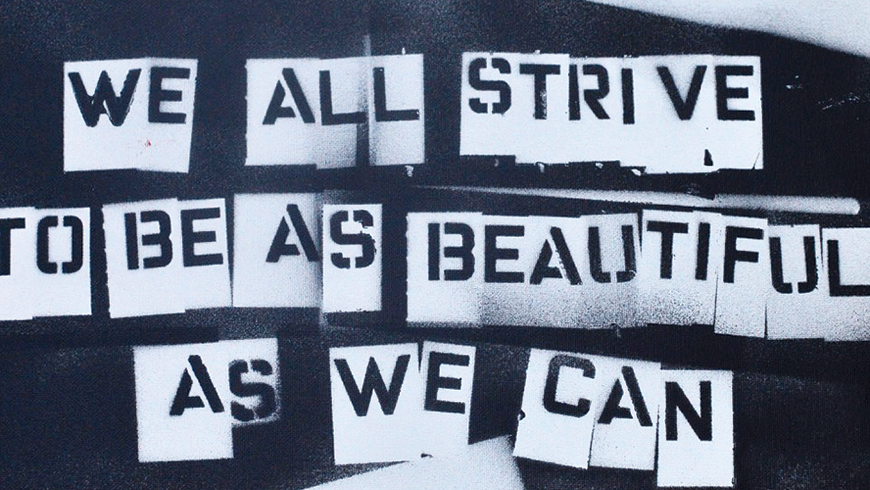High School: The Sage School
Plans for Next Year: Santa Monica Community College
Project Title: Gender & Femininity
In her senior project on gender and femininity Riley Boice posited the theme: “Negative trends in female leadership, though existent thought life, are emphasized in adolescence, when gender roles begin to diverge.” She completed a field study phase by observing students in middle, high school, and college classrooms in the Portland, Oregon, area. Her final presentation included Sage School students reading and displaying quotes that she had gathered from her research about how young girls learn to adopt and accept social roles of gender in our culture.
Excerpts from Riley’s presentation:
… I grew up in a home that told me I was strong and beautiful and capable and was fortunate enough to have a school environment that did the same. By all accounts, I should have grown up never having questioned my own validity. But then I walked outside. I opened my computer; I listened to music.
And in all these ways I’ve been taught it’s unattractive to have a voice. It’s unflattering to put everything I’ve got into anything I do. It’s dangerous to be invested. What if I fail? What if people disagree? What will they think of me then?
… We begin discarding our best assets in adolescence, when gender roles begin to solidify. Young girls are led into a paradigm that teaches them to place themselves secondary to boys. These gender roles begin to influence our identities, beliefs and values—informing and restricting our individualization.
… When we look back at our lives, looking at our personal development with this awareness, I bet every girl in this room could name at least one moment wherein they downplayed their ability, their knowledge, their opinion, their passion, in favor of appearing more likeable, more attractive, less abrasive, or -and we’ll just go there- less bitchy.
… We’re going to answer two guiding questions: How is gender identity created, and what implication does this hold for women?”
Humans are, by nature, categorical thinkers. This process allows us to make sense of the word, and understand anything new. We categorize people by race, social and economic status, sex, gender, and religion … “Once formed, categories are the basis for normal prejudgment. (Allport)”
Let’s take a pause to understand the difference between sex and gender: Sex is anatomical and physiological, and refers to biological differences. …. Gender can “refer to either social roles based on the sex of the person or personal identification of one’s own gender based on an internal awareness.”… Gender lies along a continuum, meaning nobody is simply male or female in terms of gender identity.
… (However,) traits – something like ‘nurturing’, ‘aggression’, ‘empathy’, or ‘ambition’ are human characteristics, yet if you consult the general populous, certain traits are always associated with masculine or feminine ways of being. We know gender is not categorical, but by gendering all human characteristics we construct male and female gender ideals – two categories, such that we confine female or male identifying individuals to their respective gender traits, making it socially challenging to access traits that fall outside of one’s identity.
… So, what does this mean for women?
Female expectations begin to limit women’s ability to succeed academically and thrive personally. Because, “for females, placing others first is an important characteristic of a caring, nurturing person,” girls are ushered into different classroom roles than their male counterparts. “The acceptance of gender-serotyped roles as normal behaviors, with boys being rewarded for assertive behavior, uniqueness, and risk-taking, and girls for nurturing, conformity, and placing others needs before their own.” Because female gender ideals emphasize passivity, girls become afraid of success and learn a sense of helplessness.
… Again and again we are complicit in our own subjugation. We raise our hands less in class. We don’t demand attention from the teacher, and we assert ourselves far less through unsolicited statements of our opinion or calling out to answer or ask a question. … Beyond this we don’t pursue promotions, negotiate our salaries, or advocate for ourselves and our skill sets—in the words of Sheryl Sandberg, we don’t ‘sit at the table.’
… Feminine and masculine ideals and behavior development begin in very early childhood, and continue as we grow up—through toys, media and family influence that play off our natural biological imperatives based of our sex and tell us what our interests and values are as female or male.
… For girls, middle school represents a transition from ‘believed or self-affirmed equity’ to ‘occupation’ of their ‘lesser’ female role.
… Girls model the behavior and appearances of those around them but don’t yet hold these as personally valuable … Through acting out this role, they adopt the associated traits as their own … When girls see no separation between themselves and the adopted behaviors and believe that these traits or behaviors are what define them as a person or as a female they’ve moved into the ‘occupation’ stage.
…When we ‘occupy’ the female gender ideal with the social awareness that develops in high school, we know there is a problem with the world around us, we can see the ways in which we are made inadequate, but we are unable to separate the societal perceptions of femininity say about us as women and our validity as people.
… We may not have found an answer to the problem today, but what matters is being able to reflect on moments that we hold ourselves back, times we pretend not to know, and ways our sense of self has been shaped by gender ideals that discount a huge portion of what each individual has to offer. What matters is cultivating an awareness of the ways we undermine ourselves and begin conversations about how we can construct a better, more equitable future, for her and for her and her – for all of you. And for me.


